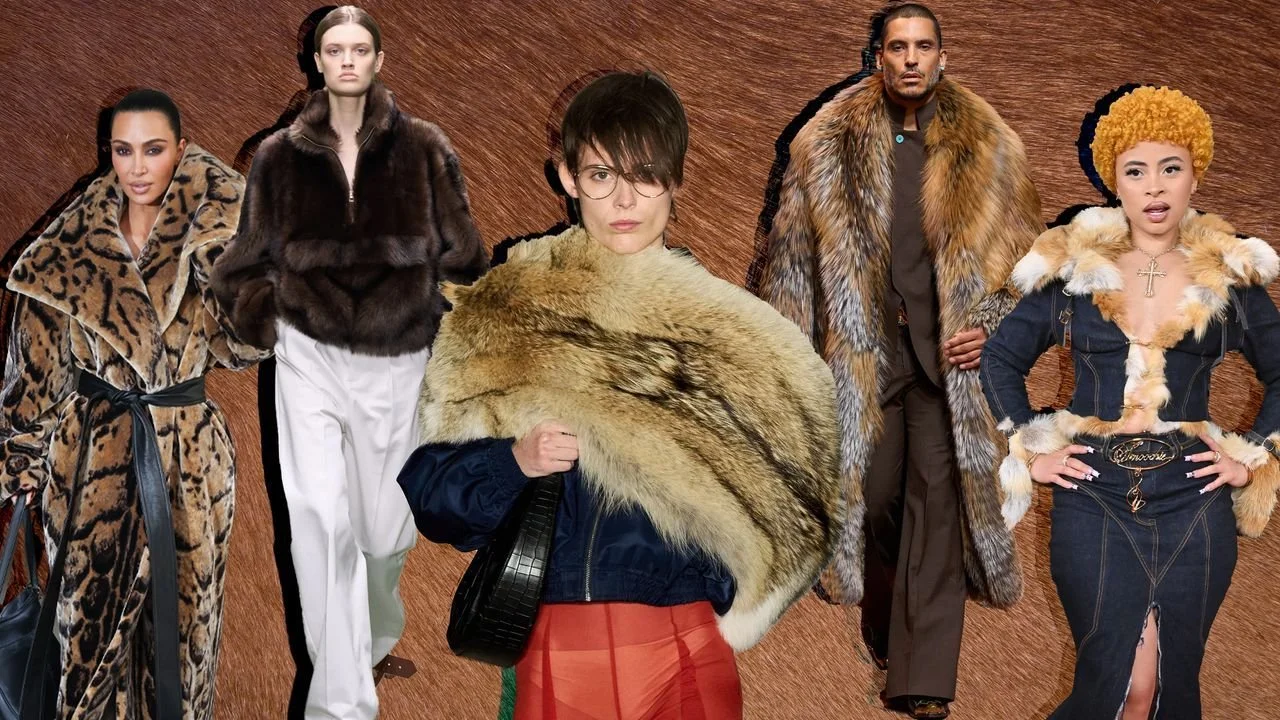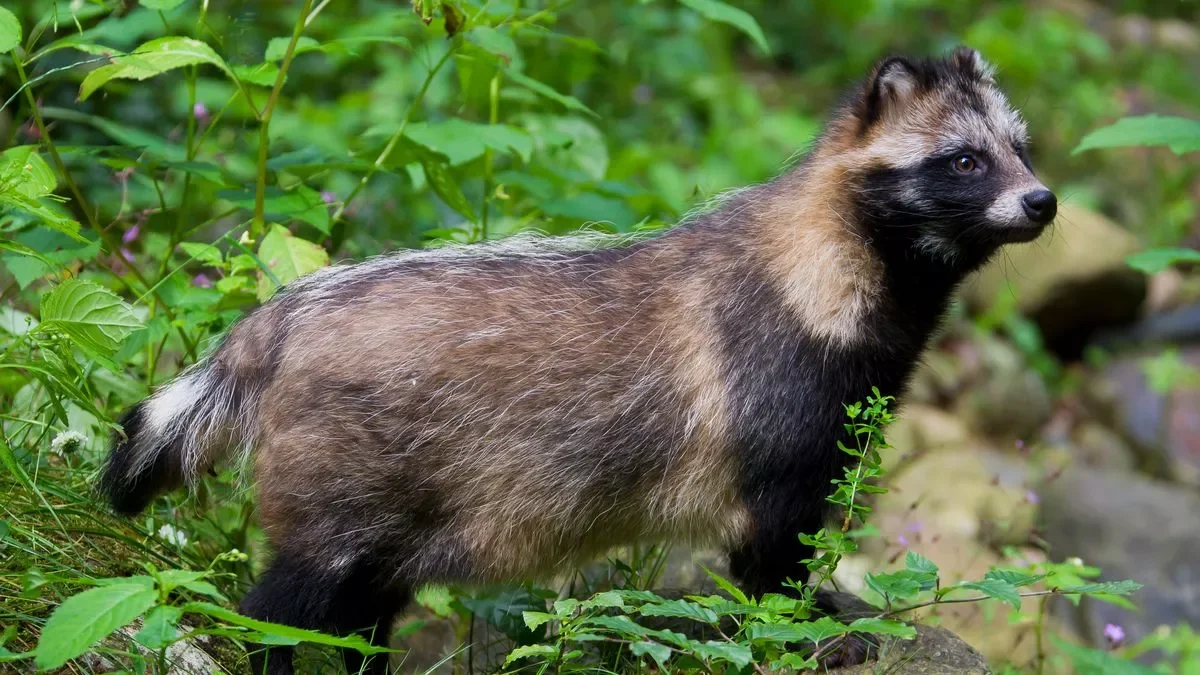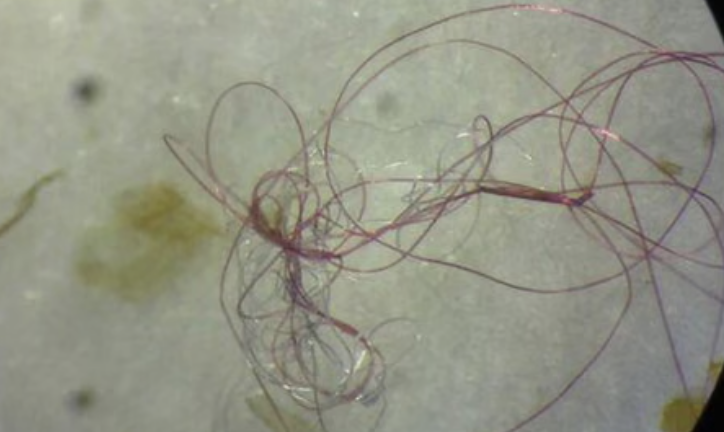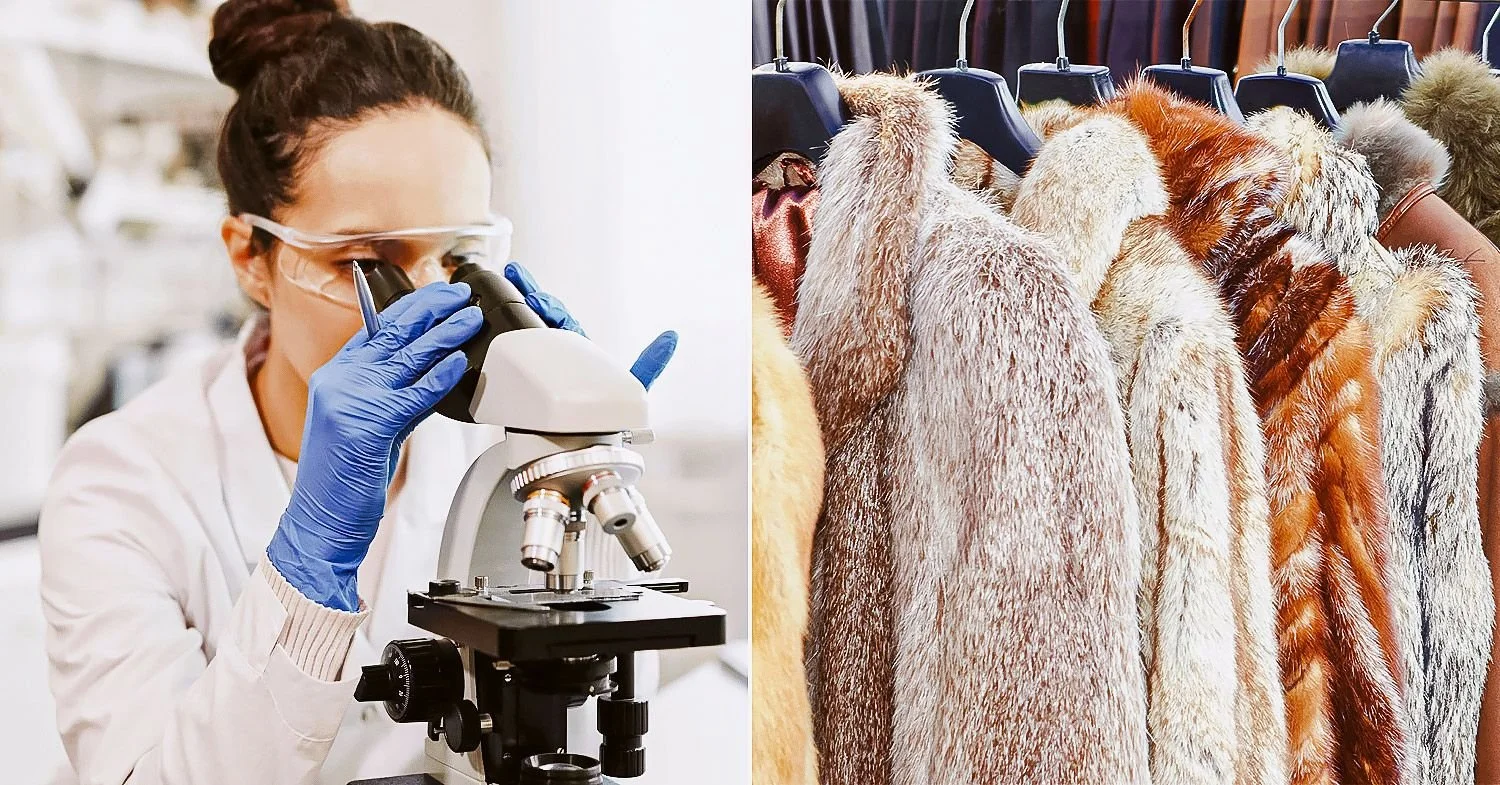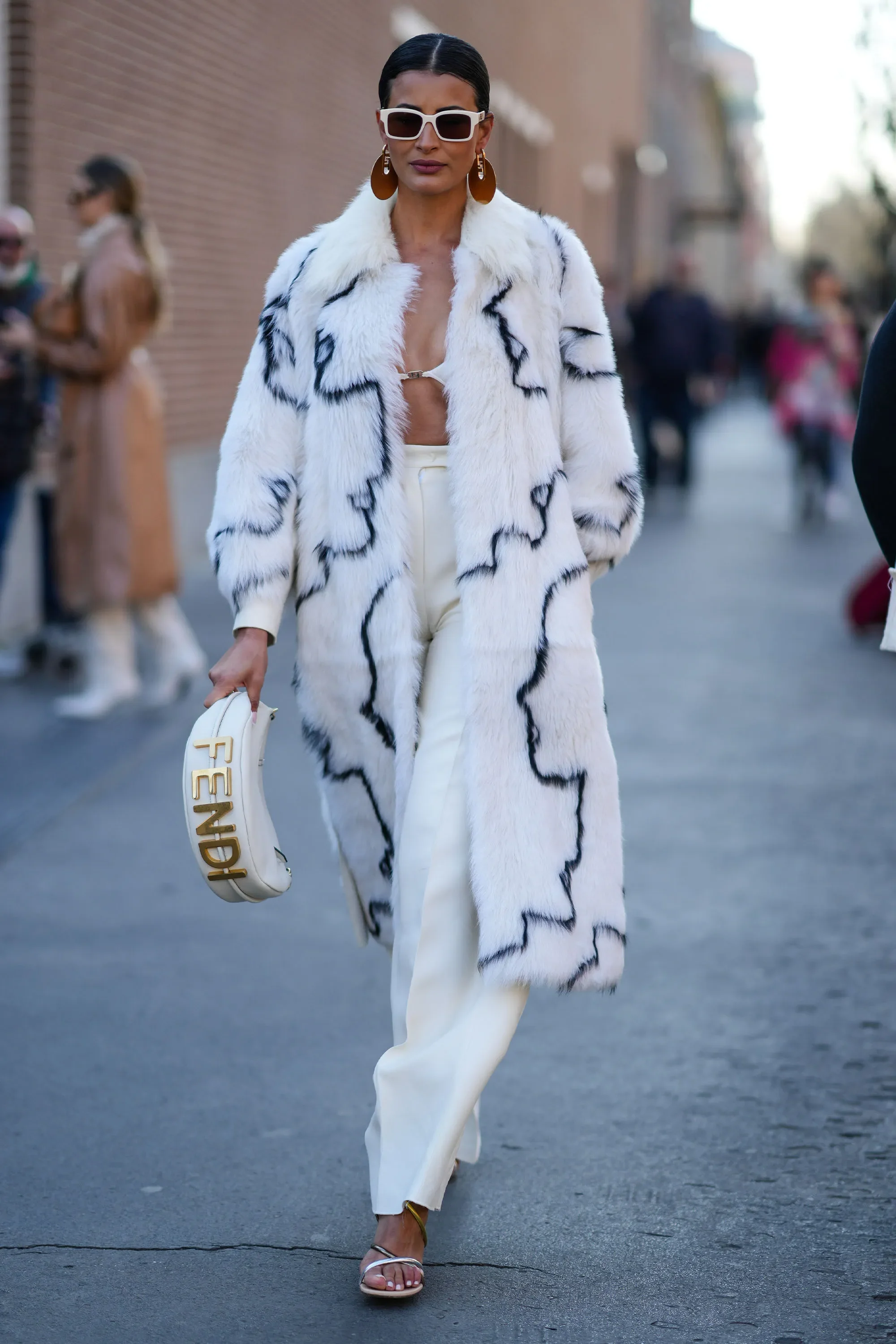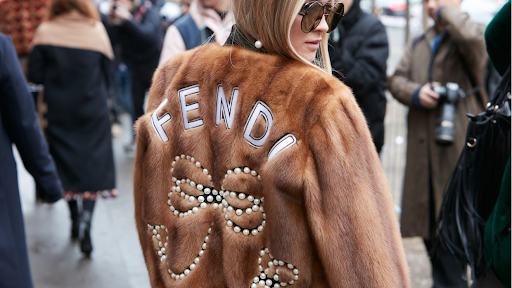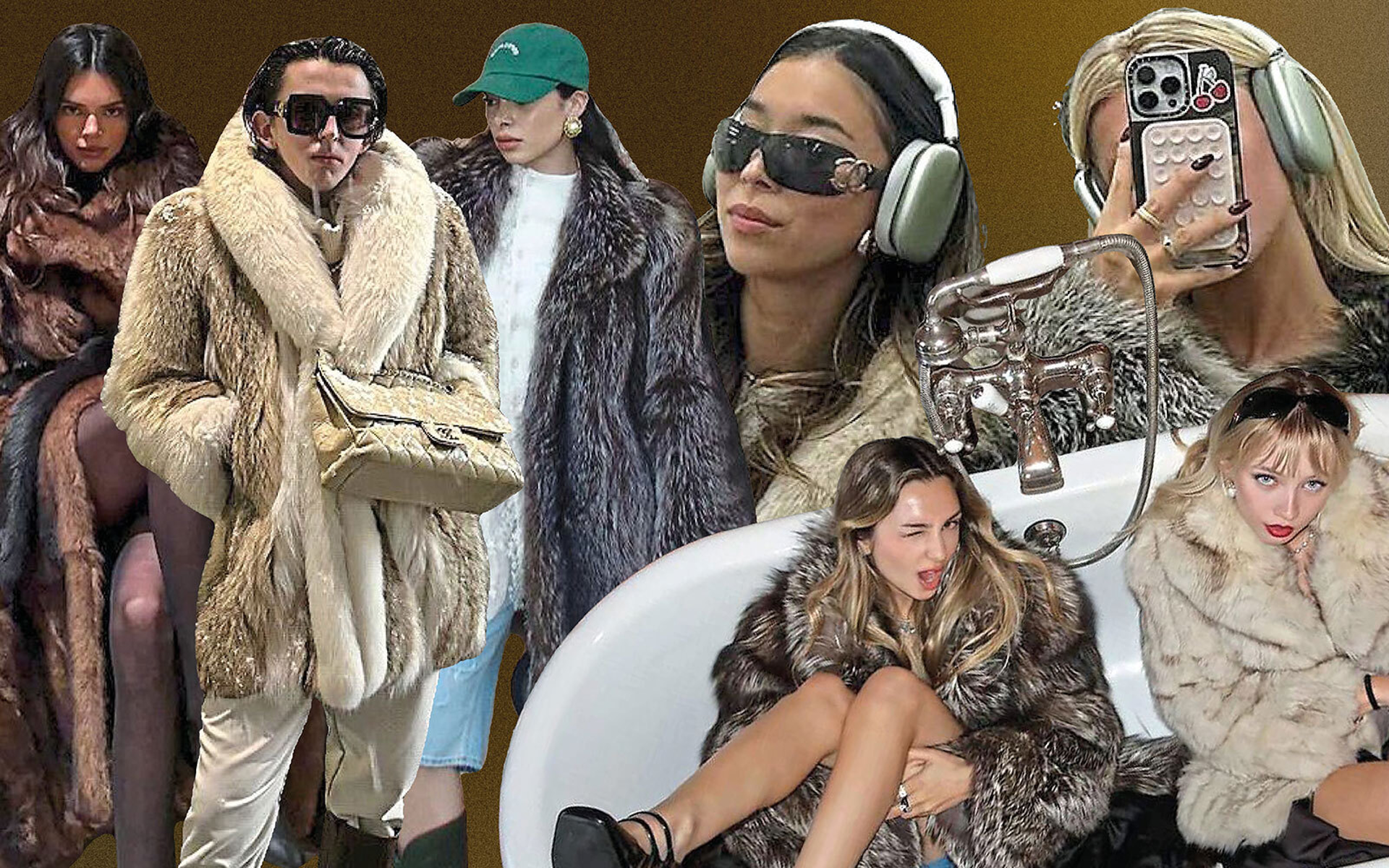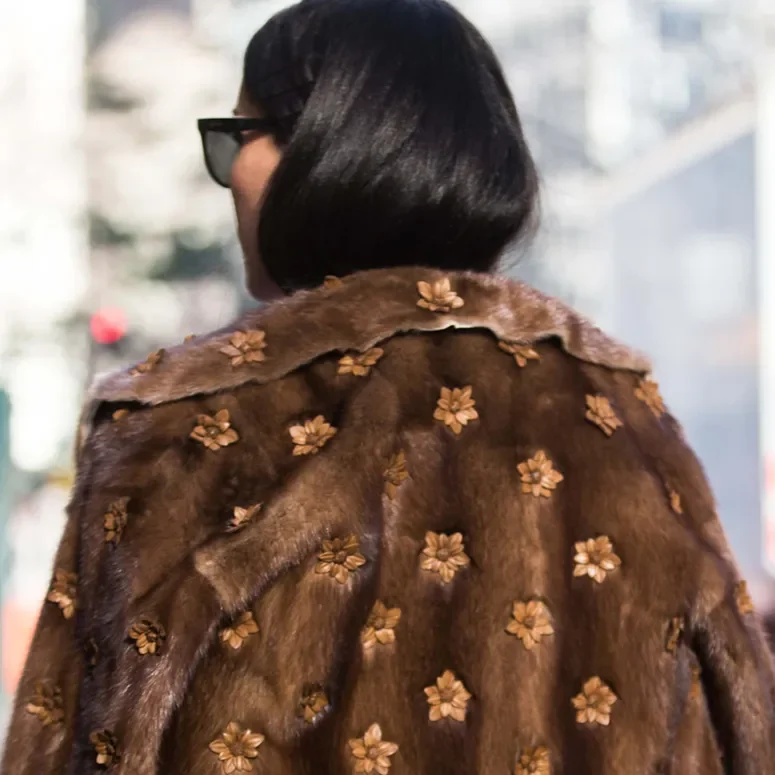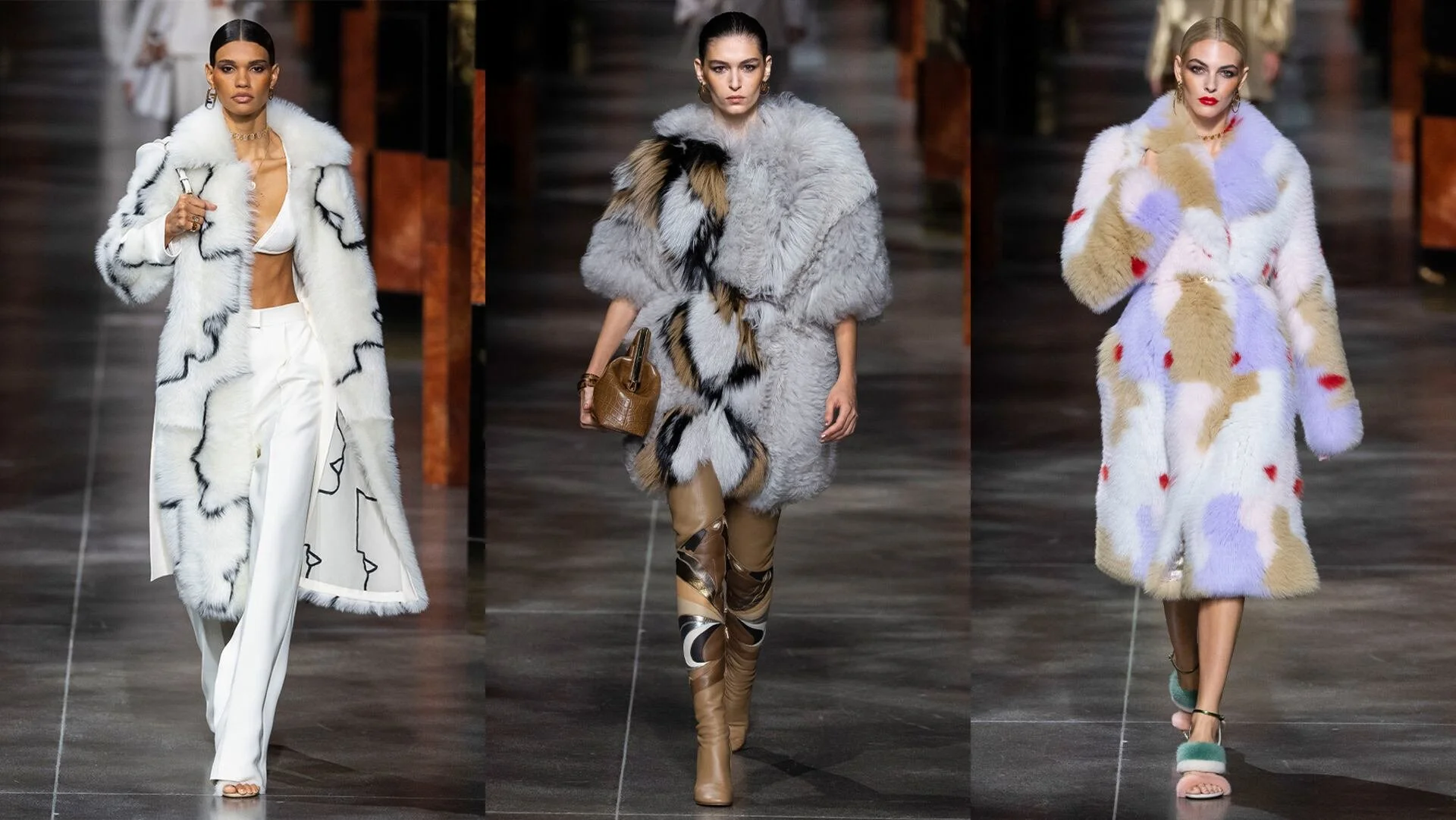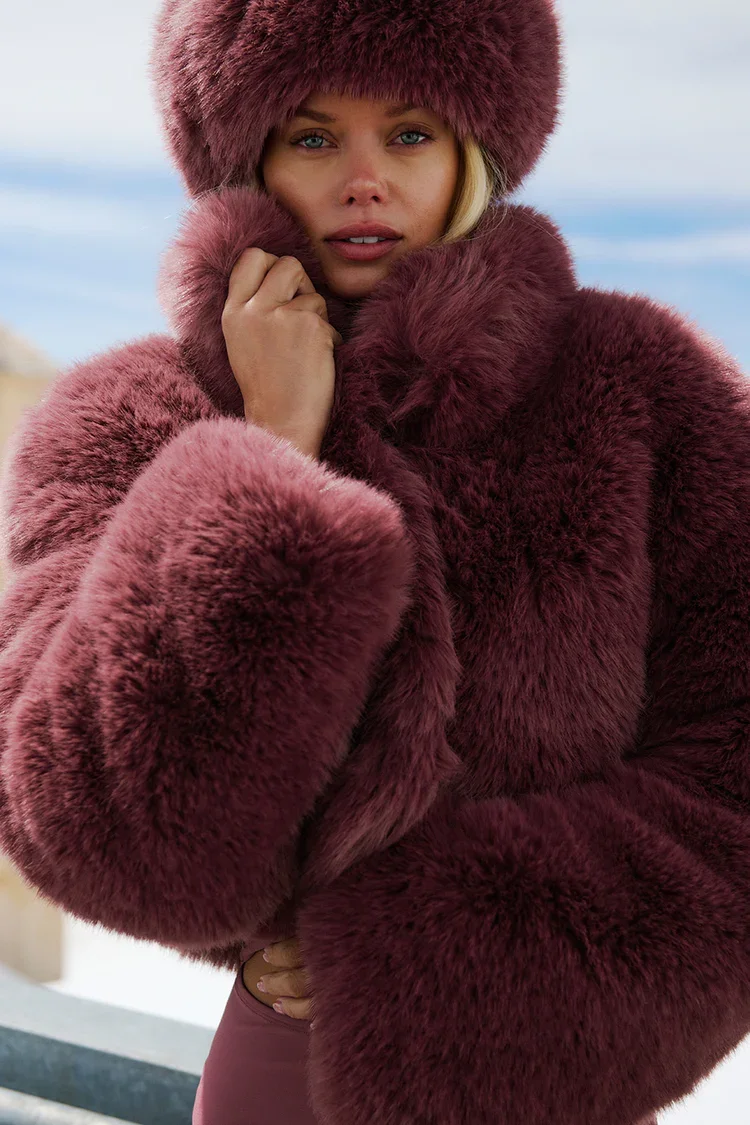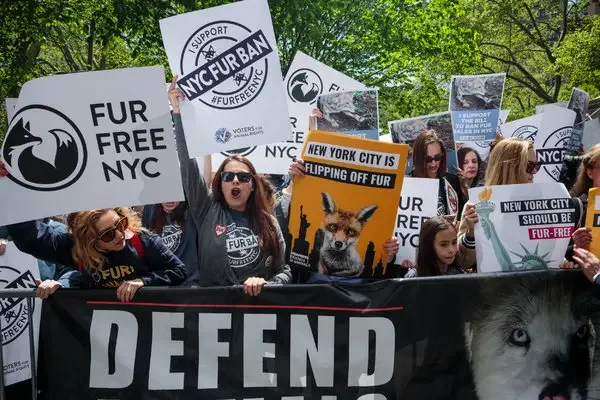Fur Real Fashion: Cruel or Cool?
Fur feels fancy. It’s soft, it’s warm, it tells a story. But behind the glam look, there’s a lot more going on. For Gen Z, the question is: Can fur survive your values? We live in a moment when how we spend tells a story about who we are. So when you buy a furry jacket or a trim, what do you support? The old world of animal farms or a new world of science, ethics, and better design?
In this blog, I want to bring you into that story. We will explore real fur, fake/faux fur, and the lab-grown future. We will talk about the cost to animals, the planet, and to us. And I’ll help you see how you, with your voice and choices, can push fashion forward.
What Is Fur Anyway?
Before we dig in, let’s understand the basics.
Real fur is animal hair and skin used for garments.
Faux fur (fake fur) is made from synthetic materials like polyester or acrylic, built to look like real fur.
Lab-grown fur or bio-fur is a new idea: grow fur-like materials in labs using biology and synthetic methods.
Each option has benefits and problems. The trick is to see both sides clearly.
Real Fur: The Tradition and the Trouble
Animal Welfare & Ethical Concerns
When you wear a real fur coat, it means animals lived and died for fashion. Often, fur farms keep animals like mink, fox, raccoon dogs, and others in small cages (4-Paws, 2022). They may live in poor conditions before being killed for their pelts.
Many animal rights groups argue that fur is inherently cruel. The suffering involved is not a “byproduct” — it’s central to how fur is made.
Environmental Damage
Real fur is not just about animals. It also has big costs for the planet.
Fur farms release greenhouse gases, use energy, and pollute air, soil, and water (Fur Free Alliance, n.d.).
The chemicals used in processing fur are toxic. They include formaldehyde, chromium, and other heavy metals (Respect for Animals, 2021).
Animal manure from fur farms carries nitrogen and phosphorus. When it runs off into water, it can cause eutrophication—that’s when water bodies get overloaded and oxygen drops, harming fish (Frontiers, 2023).
Some fur farms are linked to persistent pollutants entering nearby waterways (Are Fur Farms a Potential Source…, 2022).
A 2021 report by Respect for Animals showed how fur farms pollute land and ecosystems in many ways (Respect for Animals, 2021).
One striking detail: a study showed that fur has higher impacts in 17 of 18 environmental categories compared to other textiles (Oregon legislature report, 2021) (The Environmental Impact of Mink Fur Production, 2021). Real fur often uses more resources and causes more damage per unit than many alternatives.
Invasive Species & Ecosystem Risks
When animals escape from farms, they don’t always stay within the farm’s boundaries. Some become invasive species in wild habitats, harming local ecosystems (Frontiers, 2023). For example, escaped mink or raccoon dogs might breed and disrupt native wildlife.
Faux Fur: A Designer’s Shortcut with Hidden Costs
Faux fur grew in response to the backlash against real fur. It lets people enjoy the look without the immediate cruelty. But it’s not perfect.
Material and Pollution Issues
Most faux fur is made from petroleum-based plastics: polyester, acrylic, etc. These fibers do not break down, and over time they contribute to microplastic pollution.
Cheap faux fur can shed fibers, especially during washing. Those fibers enter water systems and eventually harm aquatic life.
Durability and Quality Concerns
In cold climates, faux fur might not insulate as well as real fur.
Over time, synthetic fur might degrade faster or look less realistic.
There is sometimes a trade-off: the cheaper the materials, the more likely the item will look cheap.
Greenwashing & Marketing Claims
Some brands push faux fur as “eco” or “sustainable” without full transparency. That’s a kind of greenwashing. You must ask:
What materials are used?
Is there a lifecycle considered?
Are they hiding drawbacks?
Lab-Grown Fur & Bio-Fur: The Science Experiment Becomes Fashion
This is where things get futuristic. A better future might exist if we can make fur without cruelty or extreme harm.
What Scientists Are Doing
Researchers from Imperial College London and Central Saint Martins are working with LVMH (the luxury conglomerate) to grow keratin-based fibers in labs to mimic fur. (Imperial & LVMH Project) This approach uses genetic engineering: put animal keratin genes in yeast, let the yeast produce fibers, and then spin them like fabric. Imperial College London
Vogue Business explains that LVMH wants not just faux fur, but plastic-free, animal-free fur, using lab biology to match quality. Vogue Business
A new report called Plant-Based and Lab-Grown Textiles explores how bio and lab-grown materials could disrupt fashion materials like fur, leather, and cotton. ResearchGate
MIT Media Lab is even creating 3D printed fur-like materials with micro structures to feel like real fur. MIT Media Lab
Image from Vogue
Benefits:
Less harm to animals
Potentially less environmental damage than real fur
More control over material properties
Challenges:
Scaling up production is hard
Cost is high now
The environmental footprint of lab processes is not zero
Acceptance is new and untested
One article notes that even though lab-grown materials are promising, no one has yet solved how to scale them affordably and truly sustainably.
How All This Maps onto Gen Z Values
You might be rolling your eyes at the cruelty, but it’s deeper than that. For Gen Z, values often include:
Ethical consumption
Environmental responsibility
Transparency and authenticity
Innovation and progress
Choosing a fur or faux fur piece is not just about style. It’s about where your money goes and what you stand for.
You can act in ways that push the fashion industry to evolve.
A Day in the Life: How Fur Affects Us All
Let’s imagine a scenario. You walk down the street in a city. A cold wind blows.
You see someone in a fur-trimmed coat, someone in a sleek faux fur jacket, and someone in a hypothetical bio-fur hoodie.
Which one do you feel good about wearing? Which aligns with your beliefs?
Every time you shop, your choices vote in the marketplace. If many people demand cruelty-free, low-impact fashion, brands will follow.
Steps You Can Take Today
Image from Vogue
Ask questions before buying
Is it real fur, faux fur, or lab-grown?
What materials are used?
Where was it made, and by whom?
2. Buy secondhand or vintage
This way, you don’t support new fur farming.
You reuse and reduce waste.
3. Support brands that are transparent
Brands that share supply chain details.
Brands working on innovation.
4. Use your voice and platforms
Talk about it on social media.
Ask brands to go fur-free.
Vote with your dollars.
5. Educate others
Share posts and facts.
Help friends see the hidden costs of “luxury.”
Common Myths & Misconceptions
Image from Zavelio
Myth: Real fur is more “natural” and thus always better.
Truth: Real fur involves heavy chemicals, energy, and ethical costs.
Myth: Faux fur is always bad for the planet.
Truth: Not all faux fur is equal. Some are higher quality, recycled, or designed to last.
Myth: Lab-grown fur is science fiction.
Truth: It is being actively researched right now. (Imperial / Fendi project) Imperial College LondonMyth: Using fur is a minor issue in fashion.
Truth: While fur is not the biggest share of fashion, its symbolic impact, environmental costs, and cruelty make it highly visible and controversial. Faunalytics
Case Study: LVMH and Lab-Grown Fur
LVMH, the giant luxury company that owns brands like Fendi, recently joined a project to develop lab-grown fur. The goal: a fur-like material that is animal-free and plastic-free (not just synthetic). Imperial College London+1
This project puts science and fashion together. If it succeeds, it could disrupt how we think about fur and luxury. It shows that big brands are already feeling pressure from consumers.
The Hard Truth: Costs We Don’t Always See
Image from Alo
When you look only at the price tag, you miss costs to nature, to communities around fur farms, to animals, and to future generations.
Water, soil, and air pollution
Loss of biodiversity
Gases that drive climate change
The weight of ethical compromise
Fashion increasingly isn’t just art or style. It is a field of consequences. What we wear matters more than ever.
Why Gen Z Holds the Key
Your generation has power. You shape social trends, social media, and demand accountability from brands. You’re not just consumers — you’re activists, creators, and changemakers.
Because you care deeply, your choices ripple. If more Gen Z people demand better, brands and fashion houses will shift. The future of fur might depend less on farms, and more on ethics and science.
References
4-Paws. (2022). Facts about fur farming. FOUR PAWS International. https://www.four-paws.org/campaigns-topics/topics/fur/facts-about-fur-farming
Are fur farms a potential source of environmental pollutants? (2022). ScienceDirect. https://www.sciencedirect.com/science/article/pii/S0048969722036439
Choi, Y. H., Park, Y., & Kim, J. (2021). Faux fur trade networks using macroscopic data. Sustainability, 13(3), 1427. https://doi.org/10.3390/su13031427
Faunalytics. (2015). The true cost of fur: A hidden environmental threat. Faunalytics. https://faunalytics.org/the-true-cost-of-fur-a-hidden-environmental-threat
Fur Free Alliance. (n.d.). Environmental impact of fur. https://www.furfreealliance.com/fur-and-environment
Good On You. (2023). Lab-grown materials in fashion: A new frontier or hype? https://goodonyou.eco/lab-grown-materials-in-fashion
Halliday, C., et al. (2022). Beliefs and attitudes of British residents about the welfare of animals. Frontiers in Animal Science, 3, 920618. https://doi.org/10.3389/fanim.2022.920618
Hansen, H. O. (2014). The global fur industry: Trends, globalization and specialization. Journal of Agricultural Science and Technology A, 4(7), 543–551. https://doi.org/10.17265/2161-6256/2014.07.001
Imperial College London. (2022, November 28). Fashion industry collaboration to create lab-grown fur. Imperial News. https://www.imperial.ac.uk/news/238531/fashion-industry-collaboration-create-lab-grown
Kayani, A. K. (2021). Can fur be sustainable? [Master’s thesis, University of Sheffield]. White Rose eTheses Online. https://etheses.whiterose.ac.uk/id/eprint/29628
MIT Media Lab. (2016). Future fur: 3D printed fur-like structures. Massachusetts Institute of Technology. https://www.media.mit.edu/posts/future-fur
Mongabay. (2022). The biomaterial revolution: How plants, fungi, and lab-grown textiles are replacing leather and fur. Mongabay. https://news.mongabay.com/2022/10/the-biomaterial-revolution-how-plants-fungi-and-lab-grown-textiles-are-replacing-leather-and-fur
Muthu, S. S. (2017). To fur or not to fur: Sustainable production and consumption within animal-based luxury and fashion products. Springer. https://doi.org/10.1007/978-981-10-2636-3
Respect for Animals. (2021). The environmental impact of mink fur production. https://respectforanimals.org/environmental-impact-report
Vogue Business. (2022). LVMH and Fendi open the door to sustainable plastic-free faux fur. Vogue Business. https://www.voguebusiness.com/sustainability/lvmh-fendi-open-the-door-to-sustainable-plastic-free-faux-fur
Wikipedia contributors. (n.d.). Fur farming. In Wikipedia. Retrieved October 9, 2025, from https://en.wikipedia.org/wiki/Fur_farming
Image Citations
Alo Yoga. (n.d.). Opulent faux fur cropped jacket – Burgundy truffle. Alo Yoga. https://www.aloyoga.com/products/w4564r-opulent-faux-fur-cropped-jacket-burgundy-truffle?srsltid=AfmBOoryB5epLRoKcmiRLIkrsegmzLyDBqpvYGFxNEhTt2Tej8sSEjRl
Baines, A. (2021, April 22). Could lab-grown fur disrupt luxury fashion? LiveKindly. https://www.livekindly.com/could-lab-grown-fur-disrupt-luxury-fashion/
Business of Fashion. (2021, December 14). Luxury’s fur calculus: To ban or not to ban? The Business of Fashion. https://www.businessoffashion.com/briefings/luxury/luxurys-fur-calculus-to-ban-or-not-to-ban/
Carrington, D. (2016, September 27). Washing clothes releases water-polluting fibres, study finds. The Guardian. https://www.theguardian.com/science/2016/sep/27/washing-clothes-releases-water-polluting-fibres-study-finds
Ferre-Sadurní, L. (2019, May 15). A fur ban in New York? Retailers say it would kill jobs. The New York Times. https://www.nytimes.com/2019/05/15/nyregion/fur-ban-nyc-sales.html
Mahdawi, A. (2024, February 2). Why Gen Z is driving the return of vintage real fur in London. Evening Standard. https://www.standard.co.uk/lifestyle/fashion/return-vintage-real-fur-gen-z-london-peta-fox-beaver-b1136120.html
Mettleship, J. (2020, July 9). Raccoon dog destroyed after being spotted on the loose in UK. Mirror. https://www.mirror.co.uk/news/uk-news/raccoon-dog-destroyed-after-being-22370635
Nature. (2024, September 12). How fur farms could spread the next big pandemic. Nature. https://www.nature.com/articles/d41586-024-02871-y
Penta, L. (2018, December 8). Real fur vs. fake fur: The latest dilemma for socially conscious consumers. The Wall Street Journal. https://www.wsj.com/articles/real-fur-vs-fake-fur-the-latest-dilemma-for-socially-conscious-consumers-1544279400
Taylor, E. (2024, March 6). Why is fur — real and pretend — everywhere again? Vogue. https://www.vogue.com/article/why-is-fur-real-and-pretend-everywhere-again
Vogue Business. (2022, February 28). LVMH and Fendi open the door to sustainable plastic-free faux fur. Vogue Business. https://www.voguebusiness.com/sustainability/lvmh-fendi-open-the-door-to-sustainable-plastic-free-faux-fur
Whiteboard Journal. (2022, April 27). Dalam upaya menjadi sustainable, LVMH dan Fendi kembangkan lab-grown fur.Whiteboard Journal. https://www.whiteboardjournal.com/ideas/fashion/dalam-upaya-menjadi-sustainable-lvmh-dan-fendi-kembangkan-lab-grown-fur/
Zavelio. (n.d.). Women’s 100% real fox fur hat S-XL premium aviator Russian ushanka trapper winter genuine leather fox fur hat natural. Zavelio. https://www.zavelio.com/womens-100-real-fox-fur-hat-s-xl-premium-aviator-russian-ushanka-trapper-winter-genuine-leather-fox-fur-hat-natural/?srsltid=AfmBOop9qcruJ5lQlIPqfyUhIQD6uik4yKuRiBWeaSKyLAcxf0qTydsf
